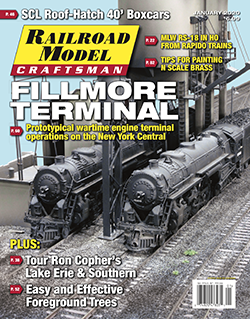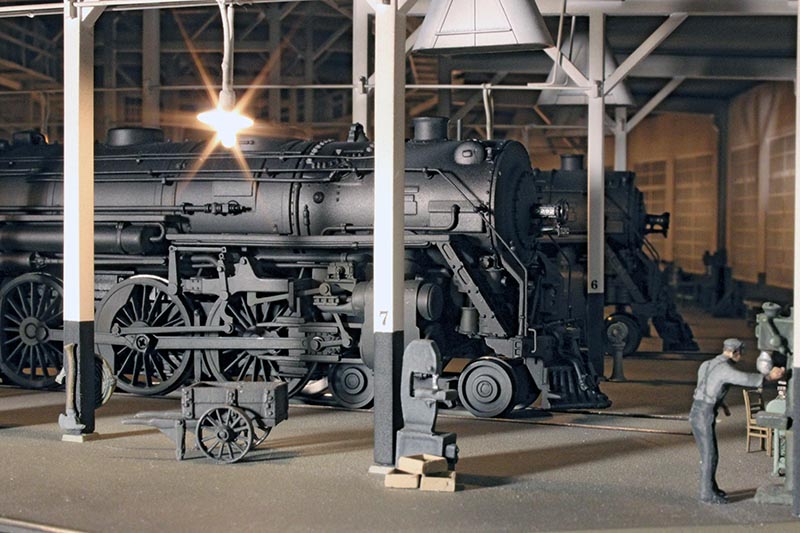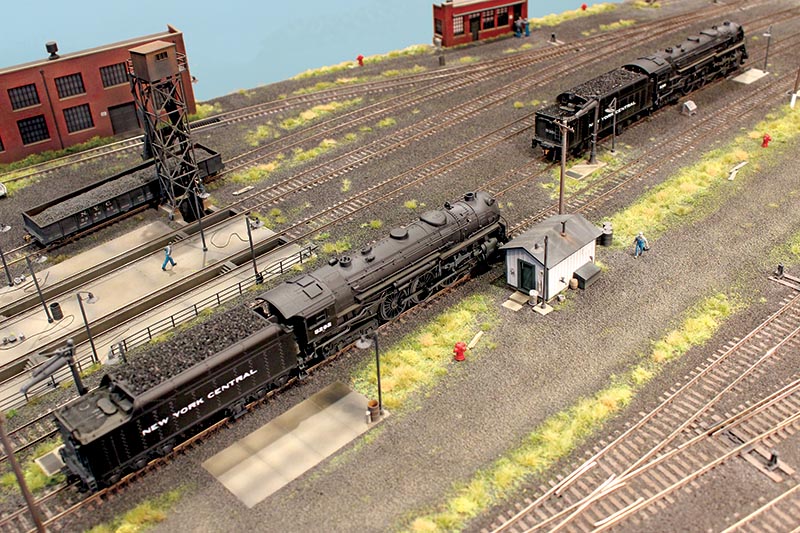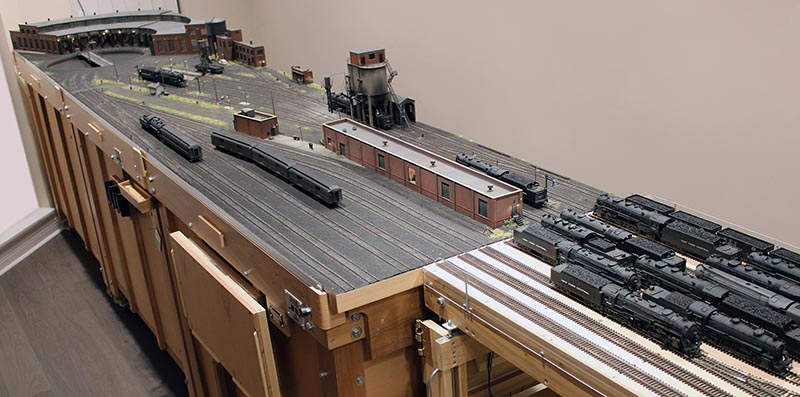 By Rick DeCandido/photos by the author
By Rick DeCandido/photos by the author
For the railfan of any era, an engine terminal is an interesting place. There, the lesser and the greater of a railroad’s motive power roster congregate. The earliest model railroad layouts probably had an engine terminal somewhere. And why not? Locomotive models are loved by practically all railroad modelers and an engine terminal is a way to congregate one’s locomotive models in a realistic setting.
Often, on large or medium-sized layouts, the engine terminal is simplified with just the major servicing structures modeled. The overall operations of the railroad take precedence, and movements there are mainly to pick up and drop off locomotives. For small spaces, engine terminal dioramas have been designed and built to display and to move about prized locomotive models. But why not a small-sized layout of an engine terminal, alone, with full prototype operations?
Like any kind of model railroad industry, all that is needed is an understanding of the kind of work that went on in a typical engine terminal and to provide a means of staging the models to represent that work.

Once inside the roundhouse, 5292 receives lubrication and other checks. Fifteen stalls are provided for, but only three or four are used for general lubrication. The others are used for repairs.
I can’t think of another kind of layout that packs more operation per square foot than a steam-era engine terminal. It isn’t just coaling up a locomotive and parking it in the roundhouse. There are many other servicing needs, and not just for the individual locomotive. An engine terminal requires supplies of fuel, sand, water, and parts for repairs. That means operating service trains. On another level, its operations can be integrated into the railroad’s larger operations, even though these are not modeled.
Premise
In the context of being part of the operations on a large railroad, in this case the New York Central in the spring of 1942, Fillmore Avenue Roundhouse in Buffalo, N.Y., supports the passenger trains of the main line from New York to Chicago. It is a “turnaround” type of enginehouse where the aim is to service passenger locomotives quickly to get them back on the road. This is achieved by providing serviceable locomotives for originating trains and through trains changing power, and to service the locomotives of terminating trains or changed-out power. Some light repairs also take place. Although this engine terminal never existed on the NYC, all locomotives, rolling stock, and operations are prototypically modeled for the era.

The ready tracks have water columns for the topping-off of tender tanks. The hut has supplies for relighting fireboxes as locomotives requiring repairs (beyond typical lubrication) inside the roundhouse have their fires dropped at the cinder pit.
The layout itself is an island on wheels, 2-1/2 feet wide by 12 feet long. This provides lots of room for operators to move about when deployed. It is covered with a fitted cloth sheet over a removable superstructure and is rolled away into a corner of the room when not in use. The rail height from the floor is low by contemporary standards at 42-1/2”. This is done to make the feel of operations more like a chess or board game. Soundtraxx Tsunami 2 equipped locomotives are run on Digitrax DCC. Besides the engine terminal, there is a portion of the coach yard used for switching.
We normally work with three operators, including a Staging Master, Lead Hostler, and the Roundhouse Foreman. We can add an Asst. Hostler, an Engine Dispatcher, and a crew to work the coach yard switcher if more would like to join in. Currently the coach yard is not operational due to changing the scheme there and the building of the required rolling stock…



